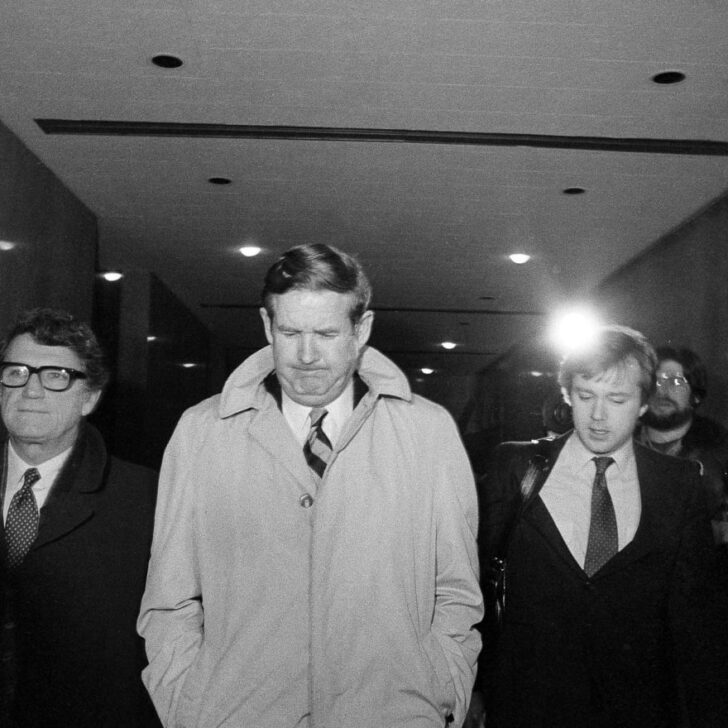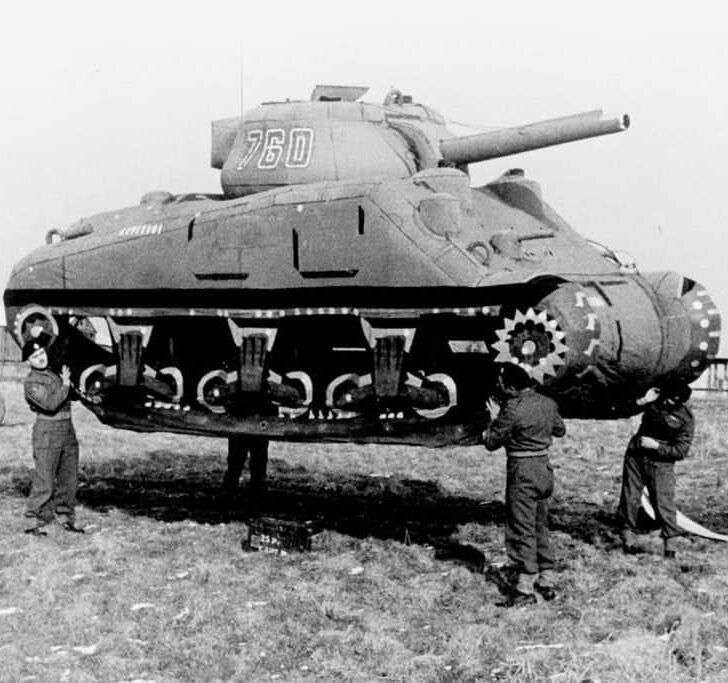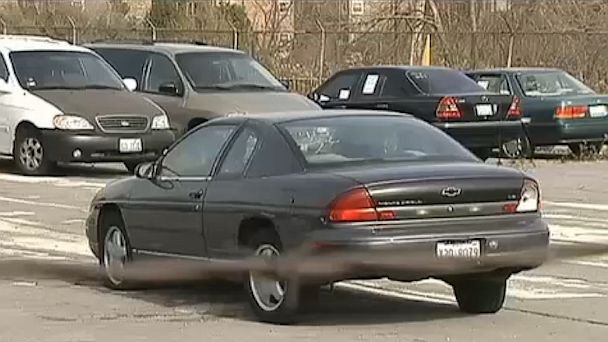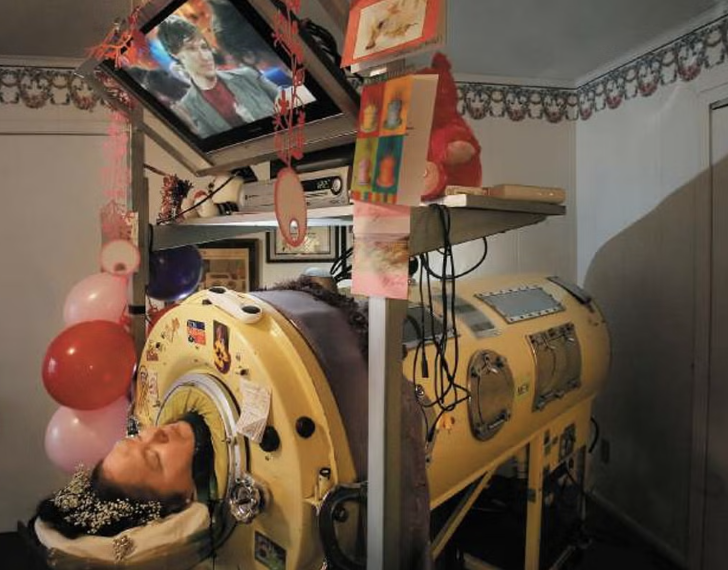Marvin Heemeyer was a United States Air Force veteran and muffler shop owner in the small Colorado town of Granby.
Over the next several years, a series of zoning disputes and legal battles over his muffler shop ignited a fire within him. He harbored deep animosity toward town officials, neighbors, and local businesses.


Driven by these grievances, he spent 18 months secretly fortifying his Komatsu D355A bulldozer with steel and concrete, transforming it into an impenetrable fortress.
On June 4, 2004, Heemeyer burst through the walls of his shop in his “Killdozer” and began a rampage that demolished several buildings, including the town hall and a former mayor’s home.
His rampage ended in him losing his life after his makeshift tank became trapped inside a hardware store. Despite the extensive damage, no one else was harmed, largely due to prompt evacuation orders.
Zoning Disputes
Heemeyer’s frustration with the town of Granby began with a land dispute. In 1992, he purchased a two-acre plot of land adjacent to his muffler shop, where he planned to expand his business.
However, his plans were foiled when the town council rezoned the area, preventing his expansion. Heemeyer saw this as an act of deliberate sabotage, which ignited a series of legal battles and further fueled his growing resentment towards local authorities.
The conflict escalated in 2001 when the council approved the construction of a concrete manufacturing plant right next to Heemeyer’s property.
The plant almost completely surrounded Heemeyer’s shop and almost seemed deliberate. The plant also blocked the driveway to his shop which affected his business.
Heemeyer felt trapped and betrayed by the very government he had served in the military.
Heemeyer felt unfairly targeted and singled out. Each interaction with local officials further fueled his belief that he was the victim of a conspiracy, pushing him further down a path of isolation and anger.
The Creation Of The Killdozer
As his isolation, anger, and frustration festered in his muffler shop, Marvin Heemeyer embarked on a secret project. Over 18 months, he meticulously transformed his Komatsu D355A bulldozer into an armored behemoth.
Abandoning his home, he moved into his muffler shop, dedicating himself full-time to building the “Killdozer.” To conceal his work, he erected a false wall within the shop, hiding the machine from prying eyes.
He welded thick steel plates onto the cabin, engine compartment, and even parts of the tracks. He reinforced these layers with concrete, creating a virtually impenetrable shell.
To be able to see where he was going, he installed cameras connected to interior monitors, allowing him to navigate despite the limited visibility. The cameras on the outside were protected with 3-inch bulletproof lexan.

He even equipped the Killdozer with makeshift gun ports, enabling him to shoot at anyone who dared approach. Air conditioning and stockpiles of food and water ensured his survival within the stifling steel cocoon.
The Day Of The Rampage
On June 4th, Heemeyer started his bulldozer and smashed through the walls of his shop. His first target was the concrete plant next to his shop.
An employee, Cody Docheff, witnessed the armored bulldozer’s relentless advance and attempted to thwart it, first by jamming objects into the treads, then by firing a pistol at the machine.
When those efforts failed, Docheff attempted to engage the Killdozer with his own front-end loader in a desperate bid to stop its destructive path. Heemeyer retaliated by firing multiple rounds at the loader.
Law enforcement arrived at the scene, but their attempts to disable the Killdozer proved futile. The bulldozer’s thick armor-plating deflected bullets fired by deputies and state troopers.
In a chilling display of power, Heemeyer even charged at a group of officers, narrowly missing them as they evacuated their position seconds before he demolished it.
After attacking the concrete plant, Heemeyer set his sights on the symbol of his rage, the Granby town hall. With relentless force, he repeatedly rammed the building, shattering windows, collapsing walls, and leaving the structure in ruins.
After he finished with the town hall, he sought out the residence of a former mayor. The armored bulldozer plowed through the house, leaving it a mangled wreck. Thankfully, the former mayor was not living at the residence at the time.
Heemeyer’s next target was the Sky-Hi News newspaper office. The newspaper had covered his legal battles and zoning disputes, painting him as the bad guy. The Killdozer crashed through the building, silencing the presses.
Police cruisers and SWAT teams tried to intercept Heemeyer, but their bullets bounced harmlessly off the bulldozer’s thick armor. They attempted to hobble him by taking out the cameras, but they could not penetrate the bulletproof plastic that protected them.
Roadblocks proved futile as the machine plowed through them with ease. Even a daring attempt by a state trooper to drop a concrete block onto the Killdozer from a helicopter failed to stop its destructive path.
Law enforcement desperately tried to stop the bulldozer, but there wasn’t much they could do. Authorities feared Heemeyer would turn his anger on innocent civilians.
The gravity of the situation prompted Governor Bill Owens to consider authorizing the use of military-grade weaponry like Hellfire missiles or Javelin anti-tank missiles to neutralize the armored bulldozer.
However, the collateral damage of the missiles would have outweighed any casualties Heemeyer may have caused, and the plan was scrapped.
Heemeyer’s rampage continued for over two hours, leaving a trail of demolished buildings and damaged vehicles in his wake.

Authorities and citizens could only watch as he targeted Gambles hardware store. As he attempted to destroy the building, the bulldozer’s tracks lost traction with the ground and became stuck.
Realizing his rampage was over, Heemeyer took his own life inside the armored bulldozer.
Inside Heemeyer’s Mind: A Descent Into Darkness
After the attack, authorities worked to try and find a motive. They didn’t have to look far.
Heemeyer recorded his complaints and reasons on three cassette tapes in which he explained the unfairness he had experienced and how he felt like the town was conspiring against him.
Heemeyer mailed the tapes to his brother in South Dakota. Recognizing that Heeymeyer was deeply disturbed, his brother promptly handed them over to the FBI, who then forwarded them to the Grand County Sheriff’s Department.
In the tapes, Heemeyer listed all of his complaints against the town council, local businesses, and individuals who had thwarted his plans to expand his business.
Some of his main grievances included:
Zoning Disputes: The most prominent issue was the series of zoning disputes he had with the town council, particularly the rezoning of the land he had purchased to expand his muffler shop. He felt this decision was deliberately targeted at him.
Concrete Plant: The approval and construction of a concrete plant near his property was another reason he was upset. Heemeyer believed the plant posed environmental hazards and negatively impacted his property value. He also felt the town ignored his concerns about the plant.
Legal Battles: Heemeyer was involved in numerous legal battles with the town and various businesses. He felt these legal proceedings were unfair and that he was being targeted by the judicial system.
Fines and Code Violations: Heemeyer was fined multiple times for code violations related to his muffler shop, such as not being connected to the sewer system and having junk cars on his property.
Perceived Corruption: He felt that officials were favoring certain businesses and individuals over others, including himself.
Personal Slights: He also expressed grievances against certain individuals in the community, including neighbors and business owners. He felt they had wronged him and were contributing to his overall problems.
Lack of Support: Heemeyer felt that the town and its residents had turned their backs on him and were not listening to his concerns. He felt isolated and alienated, which further fueled his anger and resentment.
While some of Heemeyer’s complaints may have had valid grounds, the recordings reveal a man consumed by anger and a belief that he was the victim of a conspiracy.
While it’s difficult to fully understand the psychological factors that drove Heemeyer to such extremes, his recordings suggest a combination of deep-seated anger, a distorted sense of justice, and a profound feeling of powerlessness.
This likely triggered and exacerbated underlying mental health issues, including PTSD, which ultimately led him down a dark path.
Aftermath And Legacy
Heemeyer’s rampage left Granby scarred both physically and emotionally. Thirteen buildings lay in ruins, with an estimated $7 million in damages.
Twenty years later, the memory of the Killdozer rampage remains vivid in Granby, especially the rebuilt town hall. The incident has become a cautionary tale about the potential consequences of unchecked anger and the importance of conflict resolution.
The incident divided the local residents and prompted a debate about property rights and government overreach.
Was Heemeyer justified in his anger? Did the town’s actions push him towards his extreme behavior? Could the tragedy have been prevented if the town council had considered his complaints?
The event continues to spark discussion and debate, ensuring that the legacy of Marvin Heemeyer will never be forgotten.













Leave a comment